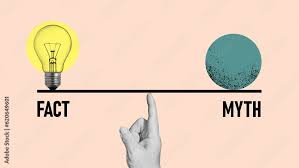What Is Erotomania / Clérambault’s Syndrome?
Bipolar disorder, depression, OCD, PTSD, and schizophrenia are all mental health conditions that we know (or have at least heard of). But according to the Diagnostic and Statistical Manual of Mental Disorders (a classification and diagnostic guide published by the American Psychiatric Association), there are over 450 mental disorders out there! I’m Sarim and today I’ll be shedding light on one of them. Erotomania (pronounced uh-raa-tow-may-nee-uh), also known as Clérambault’s Syndrome, can be classified as a rare delusional disorder in which a person believes that someone else (often someone with a higher social standing, such as a celebrity) is deeply in love with them.
Prevalence and Diagnosis
According to the National Library Of Medicine, there are about 15 cases of Erotomania per every 100,000 people every year. If we do the math, that means just over a million people are affected by this disorder today. Even though Erotomania may seem easy to identify, it is not self-diagnosable because of the complexity of the diagnosis and distinguishing it from other conditions such schizophrenia or bipolar disorder, with which it can sometimes overlap.
A Real-Life Case
According to History.com, a well-known case of Erotomania involves John W. Hinckley Jr., who became obsessed with the 1976 movie ‘Taxi Driver’ and its leading actress, Jodie Foster. His obsession escalated to the point where he attempted to assassinate the 40th U.S. President Ronald Reagan in 1981, firing six shots outside the Washington Hilton in an effort to impress Foster. He wasn’t found guilty by reason of insanity, proving the severity of Erotomania and remarking his case as one of the most publicized examples of this disorder in modern history.
Symptoms and Behavior
People with Erotomania may interpret ordinary occurrences link as secret messages from their supposed love interest, they can make attempts to contact the person, even if that person does not know them, they might feel anxious or uneasy when confronted with the fact that their beliefs aren’t real, and in severe cases, they may stalk, harass, or exhibit dangerous behaviors toward the person they believe loves them.
The Three Stages of Erotomania
According to the Los Angeles Outpatient Center, there are three stages of Erotomania. Hope, resentment, and grudge. Hope is the initial stage when the individual believes that their love interest reciprocates their feelings and sends secret signs confirming it. The patient feels optimism and adrenaline rushes during this stage. Second is resentment, feeling frustrated or angry when they realize that their perceived love was never reciprocated or acknowledged in reality. This leads to intense negative feelings such as betrayal, disappointment, and depression. Finally, the third and last stage is grudge. The person develops a strong grudge against the object of their delusion, believing they were intentionally ignored or mistreated. This stage may lead to aggressive or violent behavior.
Possible Causes, Brain Findings, and Treatment
Because this disorder is rare, its exact causes remain unknown. However, a combination of misinterpreting social cues, low self-esteem, stress, or the overlap of another disorder may contribute to it ( but one thing to keep in mind is that each person is different with their own distinct story so none of this can be generalized). Similarly, there isn’t a direct cure either, but there are treatment options such as anti-psychotic medications, cognitive behavioral therapy, and hospitalization in severe cases, but the most important thing regardless of the mental health condition is that the patient must be willing to get better. Unfortunately, individuals with Erotomania may become socially isolated due to their focus on the delusional relationship, often neglecting other relationships and responsibilities, but a strong support system and a loving environment are still crucial to their recovery. Some studies have found brain abnormalities in patients with Erotomania. According to the Cleveland clinic, the temporal lobe, located behind the ears, processes sound, language, and helps form memories so you can sense the world around you. However, Erotomanic patients may show asymmetry in this area. Additionally, the lateral ventricles, which are two symmetrical fluid-filled cavities that are located in the brain’s cerebral hemispheres, are responsible for protecting, supporting, and nourishing the central nervous system, but they’re often found to have larger volumes in patients with Erotomania.
Conclusion
While Erotomania may sound unusual or unbelievable, it is something that still exists. It’s a serious mental health disorder that can deeply impact both the individual and people around them. Though Erotomania is different for everyone, it really shows how fragile the human mind can be when reality becomes twisted and distorted. Understanding and raising awareness about such disorders not only helps break stigma, but also reminds us of the importance of mental health support, empathy, and early intervention for those who struggle silently. May God protect us all from such disorders.
Sources:
https://en.wikipedia.org/wiki/List_of_mental_disorders#:~:text=The%20DSM%2C%20a%20classification%20and,distinct%20definitions%20of%20mental%20disorders.
https://pubmed.ncbi.nlm.nih.gov/16097848/
https://www.history.com/this-day-in-history/june-21/hinckley-not-guilty-by-reason-of-insanity
https://www.webmd.com/mental-health/what-is-erotomania
https://laopcenter.com/mental-health/disorder/erotomania/
https://my.clevelandclinic.org/health/body/16799-temporal-lobe




























Roma • Oct 9, 2025 at 5:42 pm
Very well written and explained. Looking forward to read more pieces written by you.